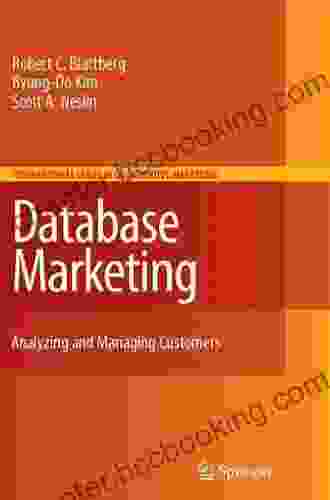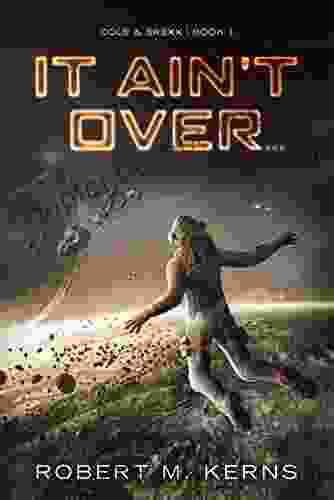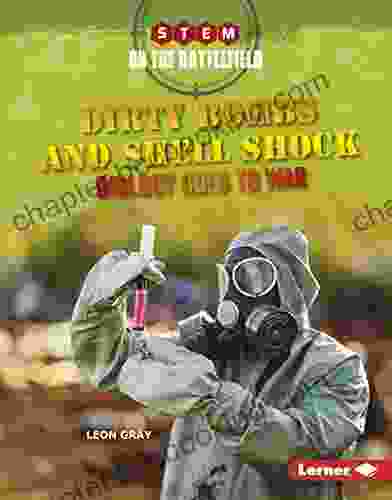Biology Goes to War: STEM on the Battlefield

5 out of 5
| Language | : | English |
| File size | : | 11283 KB |
| Screen Reader | : | Supported |
| Print length | : | 48 pages |

The human race has always been fascinated by the potential of science and technology to improve our lives. However, the same tools that can be used to create can also be used to destroy. Nowhere is this more evident than in the realm of warfare, where biology has become the latest frontier.
In the past, wars were fought with swords, spears, and guns. Today, they are increasingly fought with viruses, bacteria, and other biological agents. These new weapons are more precise, more deadly, and more difficult to defend against than traditional weapons.
The development of biological weapons is not a new phenomenon. In fact, it dates back to the time of the ancient Greeks. However, the rise of modern science and technology has made the development of these weapons much easier and more efficient.
Today, there are a number of different types of biological weapons. Some of these weapons are designed to kill or injure enemy soldiers. Others are designed to destroy crops or livestock. Still others are designed to spread disease.
The use of biological weapons is a serious threat to global security. These weapons have the potential to cause widespread death and destruction. They can also be used to target specific populations, such as ethnic or religious groups.
The international community has recognized the dangers of biological weapons. In 1972, the Biological Weapons Convention (BWC) was signed by over 100 countries. The BWC prohibits the development, production, and stockpiling of biological weapons.
Despite the BWC, there is evidence that some countries are still developing and stockpiling biological weapons. This is a major concern, as it could lead to the use of these weapons in future conflicts.
The development of biological weapons is a complex issue with no easy solutions. However, it is important to be aware of the threats posed by these weapons and to work towards preventing their use.
The Cutting-Edge Technologies of Biological Warfare
The development of new technologies is constantly changing the nature of warfare. This is especially true in the realm of biological warfare, where new technologies are making it possible to create more powerful and more precise weapons.
One of the most important new technologies in biological warfare is genetic engineering. Genetic engineering allows scientists to modify the DNA of organisms. This can be used to create new types of biological weapons that are more resistant to antibiotics or that target specific populations.
Another important new technology in biological warfare is nanotechnology. Nanotechnology allows scientists to create tiny machines that can be used to deliver biological agents to specific targets. This could make it possible to develop biological weapons that are even more precise and deadly than existing weapons.
The development of new technologies in biological warfare is a major concern. These technologies have the potential to make biological weapons even more dangerous than they already are. It is important to be aware of these developments and to work towards preventing their use.
The Ethical Dilemmas of Biological Warfare
The use of biological weapons raises a number of ethical dilemmas. These dilemmas include:
- The potential for widespread death and destruction.
- The possibility of targeting specific populations.
- The potential for long-term environmental damage.
These ethical dilemmas make the use of biological weapons a very serious issue. It is important to weigh the potential benefits of using these weapons against the potential risks before making a decision about whether or not to use them.
The Future of Biological Warfare
The future of biological warfare is uncertain. However, it is clear that these weapons are becoming more powerful and more precise. This is a major concern, as it could lead to the use of these weapons in future conflicts.
It is important to be aware of the risks posed by biological weapons and to work towards preventing their use. This can be done through a number of different means, including:
- Strengthening the Biological Weapons Convention.
- Promoting transparency and accountability in biological research.
- Educating the public about the dangers of biological weapons.
By working together, we can help to prevent the use of biological weapons and ensure a more secure future for all.
5 out of 5
| Language | : | English |
| File size | : | 11283 KB |
| Screen Reader | : | Supported |
| Print length | : | 48 pages |
Do you want to contribute by writing guest posts on this blog?
Please contact us and send us a resume of previous articles that you have written.
 Book
Book Novel
Novel Page
Page Chapter
Chapter Text
Text Story
Story Genre
Genre Reader
Reader Library
Library Paperback
Paperback E-book
E-book Magazine
Magazine Newspaper
Newspaper Paragraph
Paragraph Sentence
Sentence Bookmark
Bookmark Shelf
Shelf Glossary
Glossary Bibliography
Bibliography Foreword
Foreword Preface
Preface Synopsis
Synopsis Annotation
Annotation Footnote
Footnote Manuscript
Manuscript Scroll
Scroll Codex
Codex Tome
Tome Bestseller
Bestseller Classics
Classics Library card
Library card Narrative
Narrative Biography
Biography Autobiography
Autobiography Memoir
Memoir Reference
Reference Encyclopedia
Encyclopedia Mitali Perkins
Mitali Perkins Miya Kressin
Miya Kressin Tiki Barber
Tiki Barber Pat Lafrieda
Pat Lafrieda Michelle Anderson
Michelle Anderson Norman Link
Norman Link Thomas Kennedy
Thomas Kennedy Mildred Abbott
Mildred Abbott Yvonne Moore
Yvonne Moore Scott Tipton
Scott Tipton Michelle A Green
Michelle A Green Michael Miller
Michael Miller Vicki Howard
Vicki Howard Michael Cosgrove
Michael Cosgrove Zach Anner
Zach Anner Walter Thompson Hernandez
Walter Thompson Hernandez Mo Willan
Mo Willan Mike Kraus
Mike Kraus Meyrick Chapman
Meyrick Chapman Nathaniel Rich
Nathaniel Rich
Light bulbAdvertise smarter! Our strategic ad space ensures maximum exposure. Reserve your spot today!

 Aldous HuxleyUnlocking Customer Insights in the Global Marketplace: Analyzing and Managing...
Aldous HuxleyUnlocking Customer Insights in the Global Marketplace: Analyzing and Managing...
 Isaiah PriceKris Longknife: Deserter - A Sci-Fi Thriller That Explores the Boundaries of...
Isaiah PriceKris Longknife: Deserter - A Sci-Fi Thriller That Explores the Boundaries of...
 Troy SimmonsUnlock the Enchanting World of 18th-Century Philadelphia with "Diary of Sally...
Troy SimmonsUnlock the Enchanting World of 18th-Century Philadelphia with "Diary of Sally... Jean BlairFollow ·8.2k
Jean BlairFollow ·8.2k Willie BlairFollow ·12.5k
Willie BlairFollow ·12.5k Haruki MurakamiFollow ·17.5k
Haruki MurakamiFollow ·17.5k Dillon HayesFollow ·2.3k
Dillon HayesFollow ·2.3k Troy SimmonsFollow ·18.4k
Troy SimmonsFollow ·18.4k Richard SimmonsFollow ·15k
Richard SimmonsFollow ·15k Dan HendersonFollow ·5.3k
Dan HendersonFollow ·5.3k Mark TwainFollow ·2.5k
Mark TwainFollow ·2.5k

 Trevor Bell
Trevor BellUncover the Thrilling Mystery in "It Ain't Over, Cole...
Prepare yourself...

 Garrett Bell
Garrett BellHow to Stay True to Yourself and Stand Out From the Crowd
In a world that...

 Dennis Hayes
Dennis HayesDrill Instructor Strategies And Tactics For Success
Unleash Your Inner Warrior and Conquer...

 Guy Powell
Guy Powell101 Awesome Women Who Changed Our World: A Celebration of...
Throughout history,...

 Ashton Reed
Ashton ReedAn Iraq War Tank Commander's Inspirational Memoir of...
When he was just 19 years old, John Q....

 Dean Cox
Dean CoxLady Trader in the Transvaal: A Literary Safari through a...
Prologue: A Journey into the...
5 out of 5
| Language | : | English |
| File size | : | 11283 KB |
| Screen Reader | : | Supported |
| Print length | : | 48 pages |






